How Do I Pull the Spider Gear Pin on a 02 Gmc Seirra 1/2 Ton UPDATED
How Do I Pull the Spider Gear Pin on a 02 Gmc Seirra 1/2 Ton
When it comes to Chevrolet rearends, it's the 12-commodities that seems to get all the accolades. Rightfully so, because when comparison the 10 and 12-bolt units, it's definitely the more than durable of the ii. That's commonly proven when used in loftier-performance, high-horsepower applications. But for all intents and purposes, the 10-bolt rearend is a great unit for a street/strip car, and can be stout enough to handle even the occasional abuse delivered past employ at the racetrack.
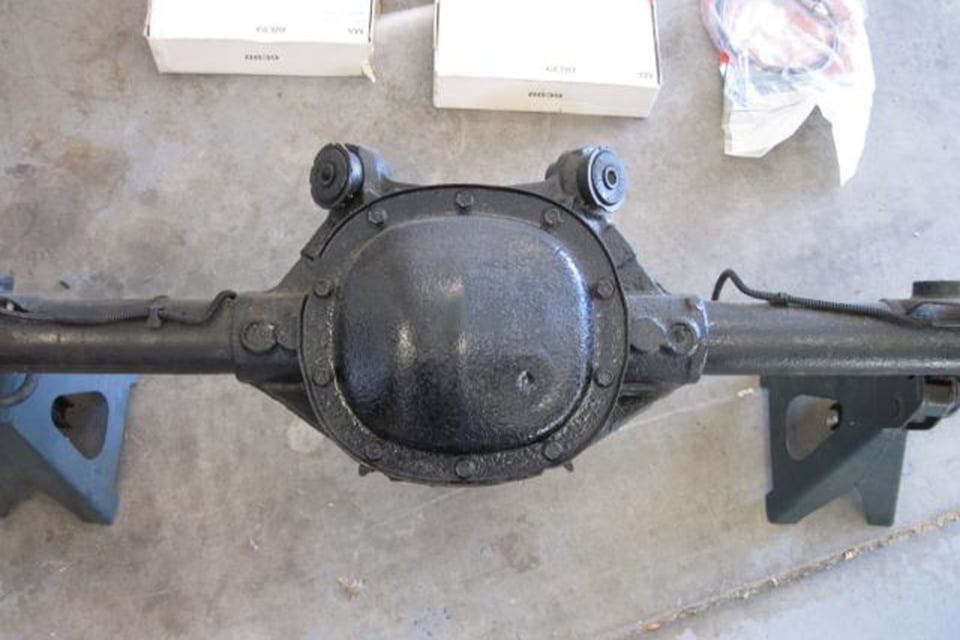
The seven.5 rearend uses an oval embrace and the housing has 2 modest bandage-in protrusions near two of the bottom encompass bolts. The control arm-mounting ears on tiptop of this seven.5 rearend denotes it is usable for whatever 1978-'88 GM A or G-body intermediate like a Cutlass, Monte Carlo, El Camino, Malibu, Regal, or One thousand Prix.
Finding a 12-bolt that is "affordable," is getting to be a nearly impossible endeavor. For that reason, many enthusiasts are considering the ten-bolt. But, did you know there is more ane style of 10-bolt rearend? 1 is the small, 7.v-inch, another is the 8.2-inch, and all the same two more than are the 8.5 and 8.vi-inch. If you're looking for a good.economic 10-bolt rearend to rebuild or install into your hot rod, you will demand to be able to accurately identify the different units so you don't accidentally come home with a 7.5 or 8.ii-inch differential.
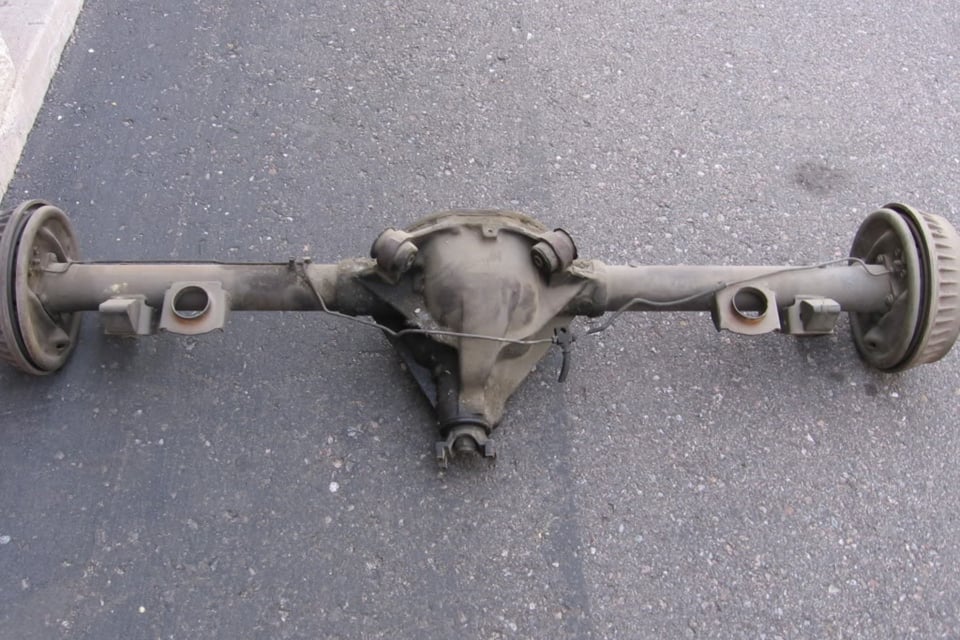
If you locate a rearend that has gyre spring perches, information technology could exist from a M, A, B-body, or El Camino.
The viii.5-inch ten-bolt rearend was used in cars and trucks over a wide range of years. It get-go appeared in 1970 production cars as a corporate replacement for the 8.2-inch x-bolt rearend. It was used in unlike models past all GM divisions – with the exception of Cadillac. Since it was so widely used, there is a better possibility of finding i of them at a salvage thou than locating a 12-bolt. That is the impetus for why nosotros decided to put this bandy run into/junkyard identification guide together. That style, you don't unknowingly spend money on something you lot really do not want.

While the 10-commodities rearend's lineage can be identified by the lawmaking stamps, which are usually on the passenger'south side axle tube, in that location are literally hundreds of potential codes for the 3 unlike 10-bolt rearend housings. Since listing them all within this article is impossible, nosotros'll be focusing only on visual identification.
7.5-Inch
Although the 7.5-inch 10-commodities closely resembles the 8.5-inch housing, you tin positively identify the Chevy 7.5-inch rearend by measuring it. The oval-shaped cover measures 8 5/xvi inches by x 9/sixteen inches. The distance between the bottom center bolt in the cover and its next bolts is iii 1/4 inches. Inside, the ring-gear bolts are the same as the eight.5 corporate unit, only the pinion-shaft diameter measures 1.438 inches. Similar nearly ten-bolts, the axles are held in place by C-clips on the inner end of the axles.
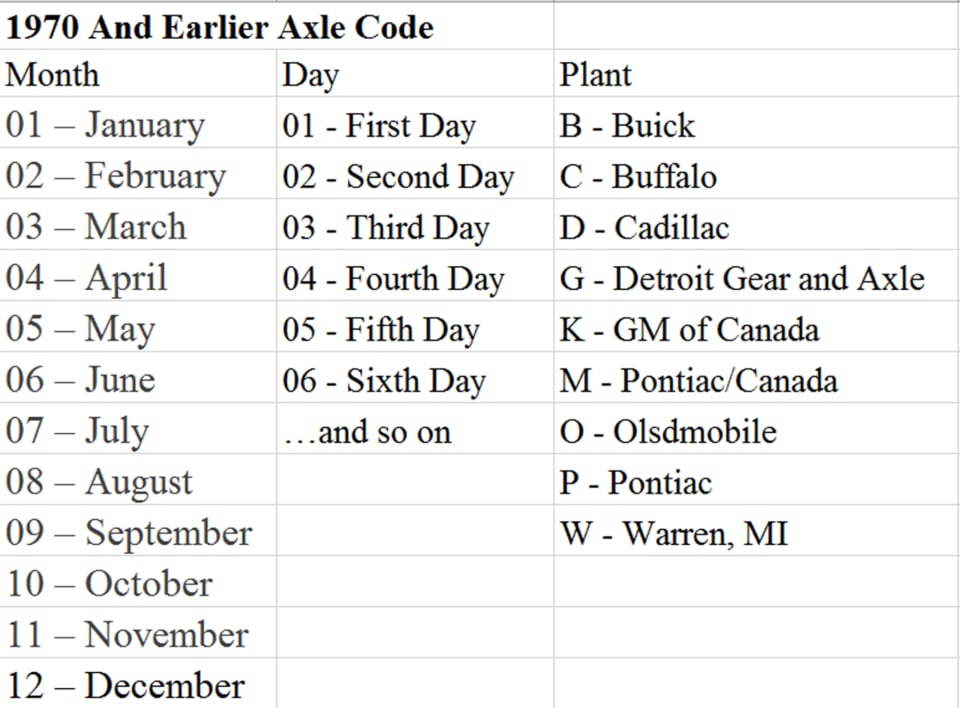
Appointment and location of manufacture are stamped in the axle tube, and this table deciphers the code.
Many times, if you locate a ten-bolt rearend, it'southward usually a 7.five-inch unit. These have been effectually since 1975, and were installed under cars, pocket-sized trucks, and vans upwards to the 2005 model yr. If used in a daily driver or cruiser application, the 7.v-inch rearend should survive behind an engine with 350hp, if traction is express during spirited driving. If sticky tires are used, you lot'll quickly plough the vii.5-inch rear into a pile of unusable parts.
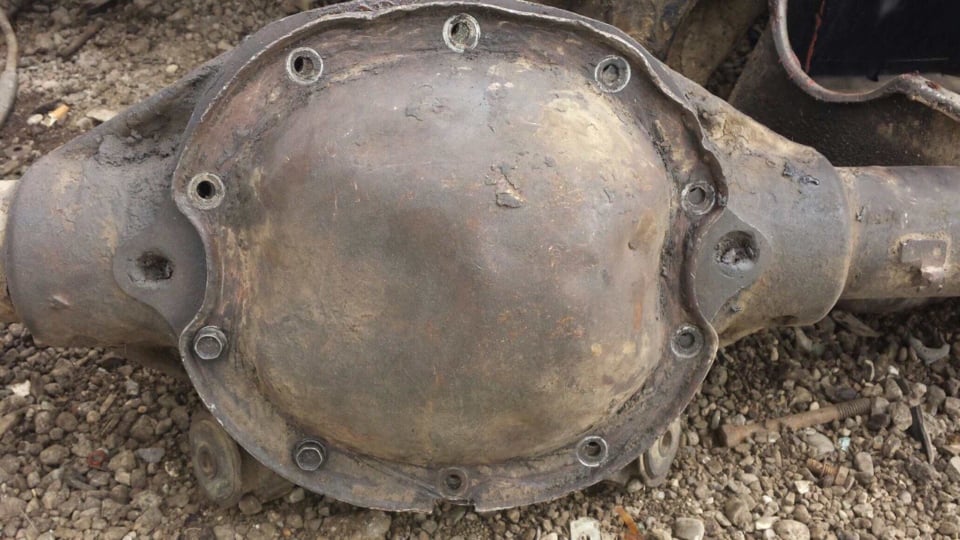
This is an 8.two BOP beam. BOP stands for Buick/Oldsmobile/Pontiac. It is internally different from the 8.2 Chevy, just has the same external bosses and brackets. However, the gears will not interchange with a Chevy 8.2. The beam shafts are also held in place by four-commodities servant plates at the outer bearing, not C-clips.
8.two-Inch
There were an untold number of 8.2-inch axle assemblies congenital, and although it is merely marginally stronger than the 7.5-inch rearend, information technology does accept some aftermarket back up. That being said, it is non recommended for employ behind engines that make a serious corporeality of horsepower. Once again, this would be okay in a daily commuter or cruiser application, but if installed behind an engine with horsepower numbers climbing into the 400 range, you can plan on an eventual failure. While a carrier-bearing girdle is available for the 8.2-inch rearend – and does give some support to the housing – it doesn't provide a reliable and suitably stiff solution.
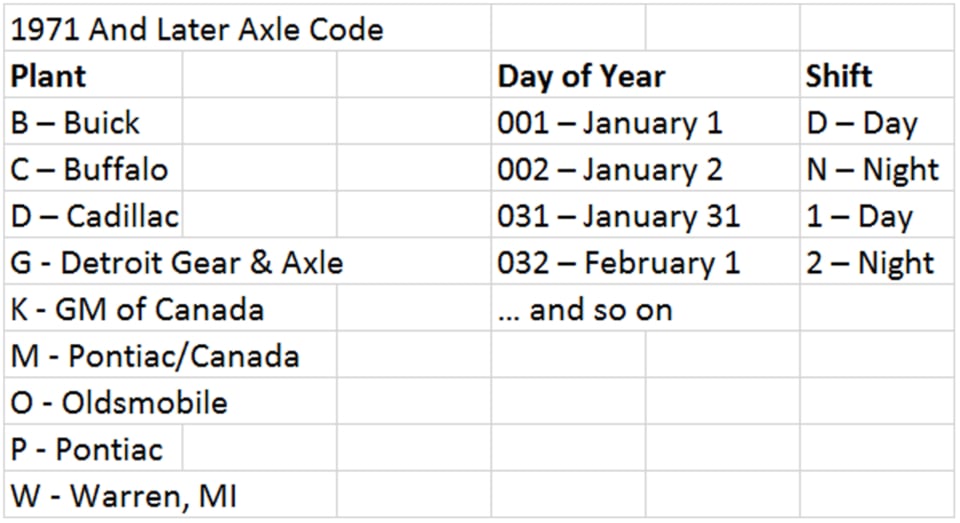
The appointment and location of industry coding changed in 1971.
The easiest fashion to identify the viii.two-inch rearend at a glance is by the shape of the housing and the spacing between the lower bolts on the cover. The viii.2-inch 10-commodities has a smooth, round, lower-case expanse (no cast-in protrusions), with an 11-inch cover that has a diagonal protrusion at the top. It also uses a ten 5/eight-inch irregular-shaped cover. The pinion nut should likewise measure 1 one/8 inches, if the OEM pinion nut is however in use.
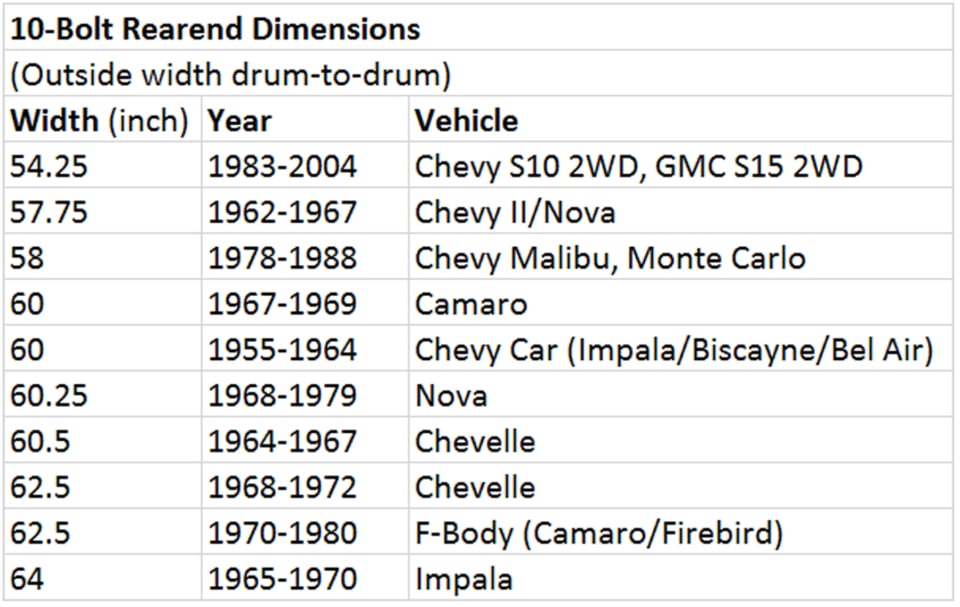
Inside the viii.two-inch 10-bolt, the band-gear bolts have 9/xvi-inch socket heads with 3/8-24 left-hand threads. The pinion diameter is one.438 inches, and has 25 splines. Similar all Chevy 10-bolts, the axles are retained by C-clips on the inner end of the beam shaft within the carrier.
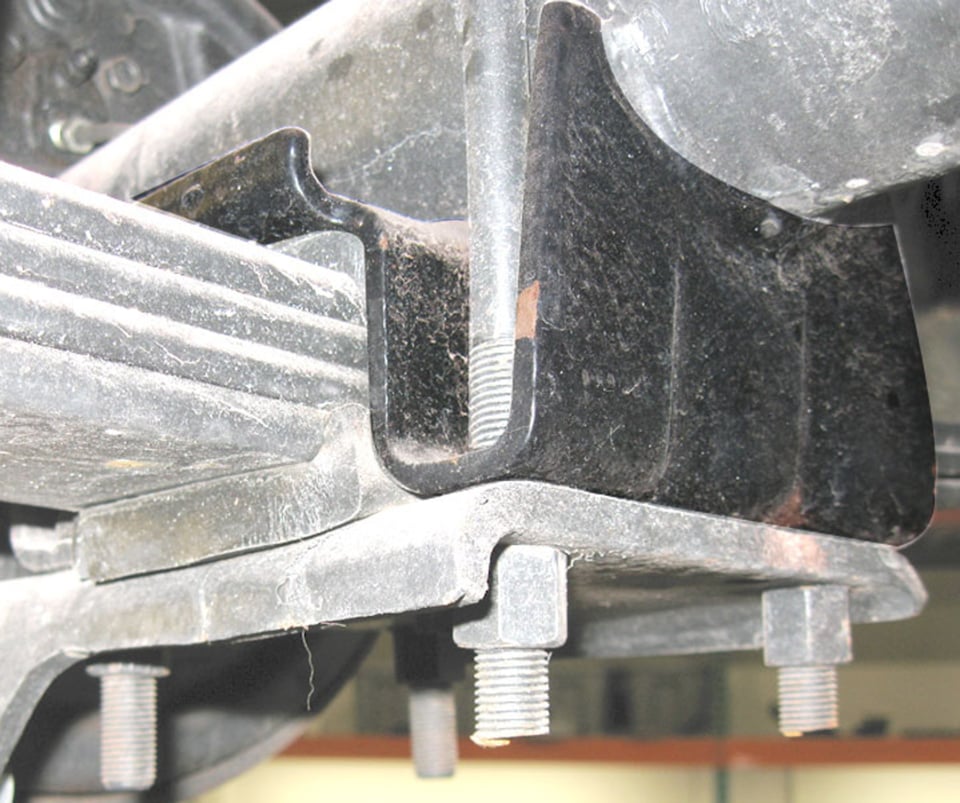
If you find a rearend that uses a large spring perch similar this, information technology is from either an Ten or F-Body.
8.five-Inch
The 8.5-inch and 8.6-inch 10-bolt rears are stout and effective differentials that can handle more than power than either the seven.5 or 8.two-inch rears. While the 8.5-inch rearend was used on vehicles up to 1999, The 8.half dozen-inch (viii.625) was used on 2000 and later-year trucks. The easiest way to tell the difference is past looking at the brakes. All eight.half-dozen-inch rears take disc brakes, and 8.5-inch units have drum brakes.
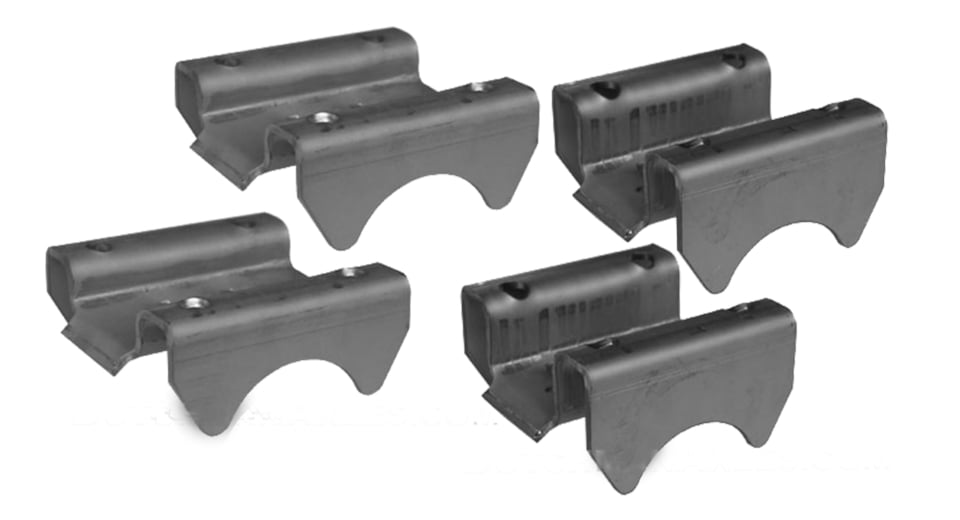
The X and F-torso spring perches come in 2 versions: mono-leaf (left) which is shallower than the multi-foliage (right).
The 8.v-inch x-bolt rearend is hugely popular because aftermarket carriers and gears are easily interchangeable. Originally, gear ratios ranged from 2.41 through 4.10. Yous will need to know that in that location are different series' of differentials (series two and 3). With the exception of truck differentials with 30-spline axles, and those carrying ii.41 and two.73 gears (series 2), the differentials will support all gear ratios without having to change carriers. The 8.5-inch 10-bolt likewise shares the same pinion shaft diameter as the more expensive 12-bolt.
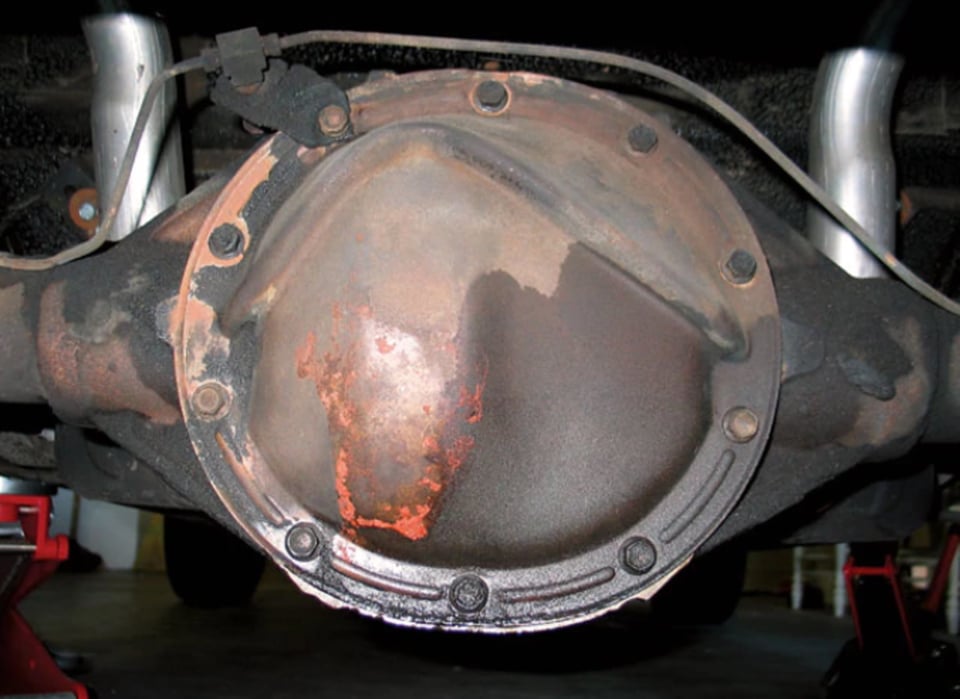
When looking at the housing from the rear, an 8.5 will have ii squared off chunks of casting hanging on each side near the bottom of the differential. An 8.2 (shown) will accept the same contour every bit the cover. About 8.2 factory covers also have the strange protrusion at the top.
Nigh 8.five-inch 10-commodities rearends have two extruded, cast-in lugs on the bottom of the differential housing at the 5:00 and 7:00 positions. The covers on the viii.5-inch rearends are oft xi inches round with a bulge on the driver's side to accommodate the ring gear. The altitude betwixt the lower heart bolt on the cover and either adjacent commodities is 3 iii/4 inches. The OEM pinion nut is 1 1/4 inches.
The 8.5-inch 10-commodities rearends take ten 3/four-inch hex head bolts with seven/16-20-inch left-hand thread bolts that concord the ring gear to the carrier. The pinion shaft diameter is 1.625 inches and will accept either 28 or 30 splines. Like the 8.ii-inch 10-bolt, the 8.5 ten-bolts use C-clips to retain the axles.
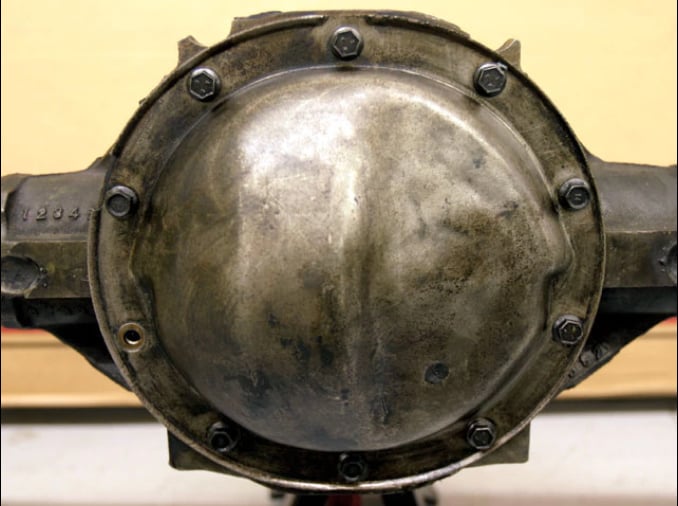
The 8.5 rearend will have a round cover, and function of the comprehend volition extend rearward to brand room for the ring gear. Yous volition also notice the big, flat, cast-in protrusions at the v and seven o'clock positions. These protrusions are larger than those on the 7.five rearend.
There is an anomaly to the "corporate" 8.5-inch axle assembly that was used in some 1971 and 1972 Buick, Oldsmobile, a few 1969 through 1972 Pontiac vehicles, as well equally the 1970 through 1972 Monte Carlo. Instead of using a C-clip to hold the axle in the housing, these beam assemblies utilize bolt-in axles, much like an viii.2 BOP rearend. Good luck finding one of these, however, as they are very popular among functioning enthusiasts.
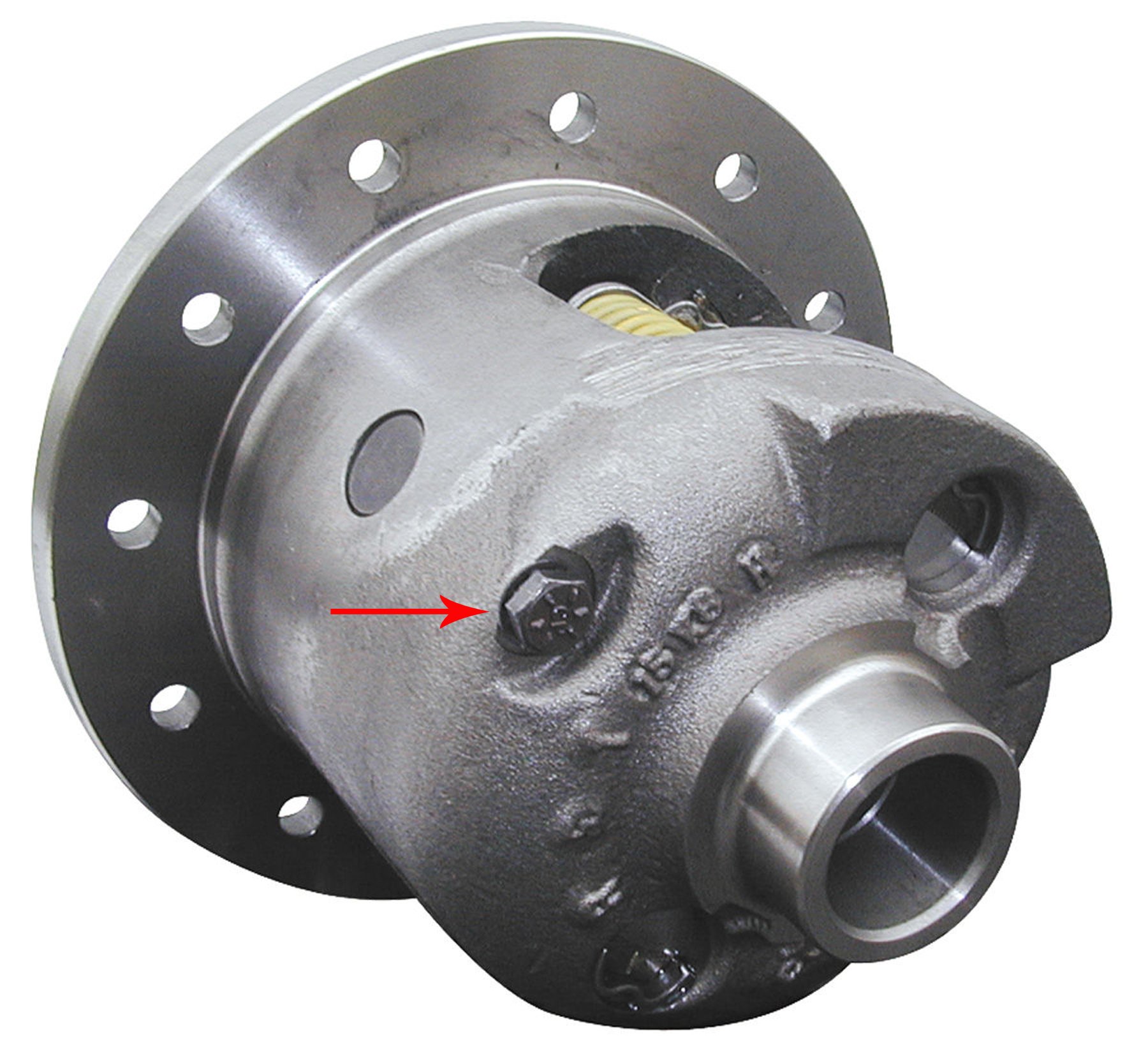
Some other style to tell the difference between an viii.2 and an 8.5 rearend is to pull the encompass and await at the bolt holding the spider gear crosspin. If it takes a 1/two-inch wrench to remove information technology, it'due south an 8.ii. If it takes a 5/xvi-inch wrench to remove it, information technology's an eight.5.
Different Differentials
There are several differentials for the 10-bolt rearend. That being said, limited gear sets are offered for the carriers, especially if you program to change gear ratios. Typically, 10-commodities differentials are specific to a series of gears. A Series 2 carrier will work with two.56 and higher gears (numerically lower) such as 2.41. These are considered highway gears that are skillful for top speed, not for off-the-line performance. The Serial 3 carriers are good for use with two.73 and lower gears (numerically higher), so 3.08 and iii.73 gears work well.
Unfortunately, unless y'all take the ii units adjacent, it is nearly impossible to tell them autonomously. At that place is a deviation, but you can't see it unless you set up both units on their side, and then measure the distance from that surface to the face where the ring gear attaches.
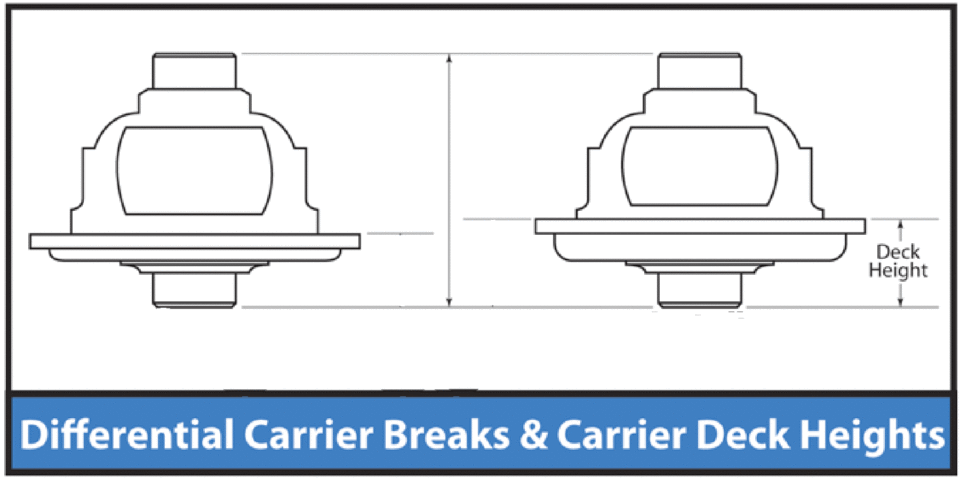
Differential Differences
7.5-inch Deck Heights
iii.08 and numerically lower gears = 1.660-inch
3.23 and numerically higher gears = 1.950- inch
8.two-inch Deck Heights
ii.73 and numerically lower gears = 1.615-inch
3.08 and numerically higher gears = ii.00-inch
8.5-inch Deck Heights
2.56 and numerically lower gears = i.530-inch
2.73 and numerically higher gears = 1.720-inch
Hopefully, this brusk list will be enough to help when y'all are scouring the swap meets and salvage yards, and you will have an idea of what you're looking for, and how to place what you find.
DOWNLOAD HERE
How Do I Pull the Spider Gear Pin on a 02 Gmc Seirra 1/2 Ton UPDATED
Posted by: robinleame1993.blogspot.com



Comments
Post a Comment